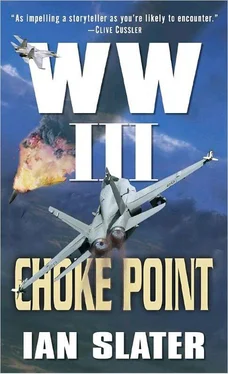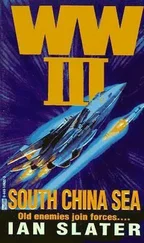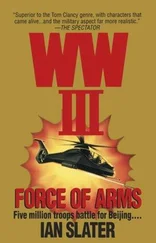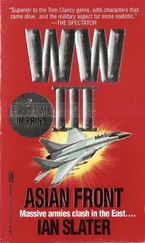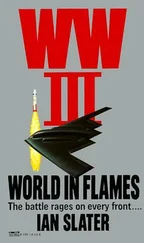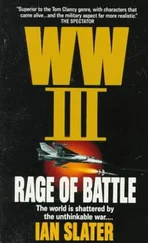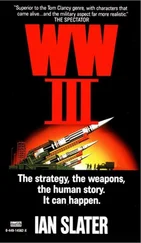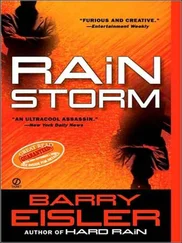To the four Americans’ astonishment, the Falcon’s pilot managed to turn his head, albeit slowly, to his right, his left hand raised slightly in a “thanks” salute.
“Hey hey hey!” called Rhino excitedly, simultaneously giving the Falcon a thumbs-up. “You go, girl!”
“Girl?” It was Rhino’s RIO. “Bullshit! You can’t tell a guy from a skirt underneath a bone dome.”
“She’s got her visor up,” retorted Rhino. “You see that, Eagle?”
“Yeah,” said Evans, “but a lot of young Asian guys can look to us like a woman. You know, no facial hair, small physique.”
“I can see her boob bumps in the g-suit,” said Rhino.
“Pull the other one,” kidded Evans.
“I’d like to pull ’em both. Hey, you guys, Taiwan’s not the only country with women on the joystick. We’ve got ’em too, remember?”
“Not many,” cut in Evans.
“We’ve got ’em, though,” cut in Rhino’s RIO. “Call signs—’Pussy Galore,’ ’Titty Galore’—”
A gravelly voice that sounded right next door but was Admiral Crowley over three hundred miles away entered the conversation. “Chipper, Rhino, knock it off.” The McCain was no doubt doing its thing, scanning, plucking radio signals out of the ether at will, alerting Crowley to the presence of one or all three of McCain ’s women pilots in the Combat Information Center.
“Focus,” Crowley added grumpily. “Report on Bizarro?”
“Bizarro looking good,” reported Chipper crisply. “Possible …” He paused. Was it a he or a she? What the hell did it matter anyway? “Possible that Falcon will be able to make our roof.” “Roof” wasn’t exactly code, but using colloquialisms like this instead of saying “able to reach our carrier” was more often than not effective in confusing ChiCom listening posts.
In McCain ’s Combat Information Center, Admiral Crowley was concerned about the rock-bottom morale of the U.S. Navy after this last week. It had enveloped him as much as if not more than the six thousand officers and crew on his boat. No one could afford another mistake, though just how anyone could be blamed for not having detected the small but deadly predator hiding somewhere in the eleven hundred square miles of Juan de Fuca, and now apparently Georgia Strait, was not all clear. Of course, everyone aboard had his or her own theory of how such a small target lurking in the depths could so easily have escaped detection. There were six thousand theories aboard McCain alone, though the pointy heads — the electronic warfare elite — had all but unanimously concluded that the midget sub must be covered in revolutionary state-of-the-art anechoic sound tiles with the sonar absorption capability of cottage cheese. It didn’t surprise Crowley. Hell, the U.S. had done it with the radar-absorbing tiles on the latest stealthed fighters and bombers.
The “little black guy,” as the tall, six-foot-three John Cuso was affectionately called by the McCain ’s CIC staff, was also concerned. He had become as perennially cautious as Crowley, despite his life on the edge in his previous incarnation as a fighter jock. Perhaps his caution, like his boss’s, was in part the result of simply growing older, when one began to lose the air of invincibility, the universal conviction of youth that they wouldn’t be the one to “get it,” that the unthinkable fate would be visited only upon the incompetent and the hesitant.
Cuso, his skin still goose-pimpled by the cold air-conditioning in the CIC, cautioned the admiral that this “Bizarro”—another informal code word to confuse hostile eavesdroppers — might be a ChiCom pilot in a captured ROC Falcon from Kinmen Field.
“For what purpose?” asked the admiral.
“To decoy our CAP away from the ChiCom hostiles who slipped around the bottom of Taiwan and who, if everything is on cue—” Cuso looked up at the CIC situation board. “—should be encountering our boys pretty soon.”
“Well, John,” answered Crowley, “if Bizarro is a decoy, which I doubt, he or she managed to sucker us only for a while. But we’re on to the hostiles now.”
“Yes, but if we’d had Chipper’s CAP farther northeast as the hostiles came around, we’d have scattered them there.”
“ ’Ifs’ don’t help us, John. Our CAP had to investigate Bizarro, who they think is a wounded Taiwanese pilot. My gut instinct is that it’s exactly as young Evans says — a friendly, shot-up, scared, on auto until he or she recovers enough to be able to land that sucker. And my guess is he’s low on gas.”
Cuso nodded at this last conclusion. “I think you’re right there. The vectors suggest he, she, must have only—”
“CAP to Mother.” It was Armstrong’s voice. “Are we to escort Bizarro to the roof?”
“One moment, Chipper,” said Crowley.
“If that Falcon’s shot up—” began Cuso.
“Goddamn, John,” retorted Crowley. “They can see the bullet holes in it, tail to canopy. It’s a miracle the bird’s still in the air.”
“What I mean, sir,” continued Cuso, “is that his auto might be whacked for a landing anywhere, let alone a carrier.”
“I’m not risking him landing on the roof, John. I’m not risking any of our crew on the deck.” He grabbed the spiral cord mike. “Mother to CAP. Negative for the roof. You’ll have to have Bizarro eject for pickup. I say again, Bizarro to eject for pickup.” Crowley put the mike in its cradle, asking his “covey” of electronics weapons officers, “What’s our CAP’s ETA?”
“Twenty-five minutes, sir. Possibly a little less. SSES advises SATRECON shows strong tailwind.”
“That from the typhoon?”
“Yes, sir.”
“Good for Armstrong and Manowski coming home, but that means strong headwinds for FITCOMPRON.”
“Yes, sir. Gusts up to seventy miles per hour.”
Confirming his officers’ verbal report, the admiral, like every other commander in his carrier battle group, looking up at their big blue screens, could see that his FITCOMPRON was slowing because of the headwinds. Contact would now be made in fifty seconds, the CIC computers also projecting a rapidly increasing rate of fuel consumption. Crowley ordered three of his six S-3B Vikings to be brought up by their elevator and gassed up, their antisub warfare crew to ready the aircraft for its other function as aerial refueler, should the Hornets and Tomcats — particularly the Hornets — become dangerously low on Avgas after having to buck the winds of the advancing typhoon.
“No way the Chinese Communists started this punch-up with Taiwan,” Crowley told John Cuso. “Who in their right mind would risk any kind of invasion, knowing a typhoon is gonna hit them in the face?”
Cuso was noncommittal. A lot of the world wasn’t in its right mind, including his mother-in-law. “Maybe Beijing was caught with its pants down. Didn’t believe the weather forecast. Or maybe the ChiComs figured that now would be when an attack would be least expected. Like MacArthur at Inchon,” continued Cuso, “and that Freeman retreating with his armor in that blizzard, then—”
“Angels approaching hostiles,” announced a weapons officer calmly, his relaxed tone belying the tension building in the skies over the Penghu Islands, where McCain ’s twenty-two fighters’ job would be to break westward, but not before they made visual contact with what SSES’s satellite-catalyzed radar had designated as “hostiles.” Only then could McCain ’s twelve “Hummer” Super Hornets and F-14 Tomcats break left, heading eastward to act as what the White House was pleased to call a “buffer zone” between the two Chinese air forces, the Pentagon Rules of Engagement forbidding the Americans to fire unless fired upon.
Читать дальше
